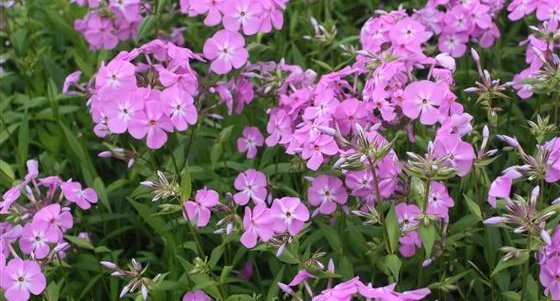
This Week's Plant Highlight from New Moon Nursery: Phlox glaberrima 'Morris Berd' - Morris Berd smooth phlox
Available in a DP50 for $49.50 which is just $0.99 per plant. See our Availability.
FIRST IMPRESSIONS: Phlox glaberrima ‘Morris Berd’ is a compact phlox cultivar with dark green leaves and maroon winter foliage. In summer, foliage is topped by loose clusters of large showy rosy pink flowers. ‘Morris Berd’ is an attractive groundcover for sunny or brightly shaded gardens with moist well drained soil.
HABITAT & HARDINESS: The parent species Phlox glaberrima occurs from North Carolina west to Illinois and south to the Gulf of Mexico. The species is indigenous to stream banks, open bottomland forests, seeps, river banks and shoals, swamps, fens, marshes, sedge meadows and tallgrass prairies.
Phlox glaberrima ‘Morris Berd’ is sometimes known as P. pulchra ‘Morris Berd’ or P. triflora ‘Morris Berd’. The original plant was given to Pennsylvania artist and horticulturist Morris Berd by botanist Edgar Wherry. It was introduced into the trade by Don Hackenberry of Appalachian Wildflower Nursery. The cultivar is known for its large deep pink flowers, purplish winter foliage, compact growth, vigor and disease resistance.
Plants are hardy from USDA Zones 3-8.
PLANT DESCRIPTION: Phlox glaberrima ‘Morris Berd’ is a low clump forming rhizomatous perennial wildflower.
Leaves are about 3” long and are lance shaped with smooth edges. They are deep green with bluntly pointed tips. Blades are thick, glossy and rounded at the base. They are opposite and arranged in pairs along the stems.
The stems terminate in large showy fragrant flower panicles. The florets have 5 flat rounded, rosy-pink petals with white centers. The lower part of the corolla is fused into a narrow tube.
Blooming occurs for 6-8 weeks from late spring into summer.
In mild climates, semi-evergreen purple foliage persists.
Plants grow 1-2’ tall with an equal spread.
CULTURAL & MAINTENANCE NEEDS: Phlox glaberrima ‘Morris Berd’ flourishes in sun or part shade with moist or wet rich well drained acid soil. Plants tolerate clay loam, sand and heat.
This cultivar is a vigorous mildew resistant grower with a long blooming period. Length of bloom may be extended even longer if spent flowers are deadheaded.
LANDSCAPE USES: This cultivar is a desirable Groundcover for a Wildlife Garden or Perennial Border. Plants are also used as Butterfly Nectar Plants, Cut Flowers or as part of a Grouping or Mass Planting. In mild climates attractive wine colored rosettes provide Winter Interest. Phlox glaberrima ‘Morris Berd’ has Showy Blooms and is appropriate for Cottage Gardens, Deer Resistant Plantings, Low Maintenance Plantings, Rain Gardens and Shade Gardens.
COMPANION & UNDERSTUDY PLANTS: Try pairing Phlox glaberrima ‘Morris Berd’ with Aster laevis ‘Bluebird’, Amsonia tabernaemontana, Carex flaccosperma, Echinacea purpurea, Penstemon digitalis or Panicum virgatum ‘Northwind’.
Phlox pilosa has similar appearance and culture and could be substituted in some situations.
TRIVIA: Phlox glaberrima ‘Morris Berd’ provides nectar for butterflies and hummingbirds. The leaves and stems are unpalatable to deer but may be nibbled by rabbits.
The earliest reported phlox in cultivation was of Phlox glaberrima being grown in the Chelsea Physic Garden in London in 1725.
This cultivar was rated along with many other Phlox spp. in the Chicago Botanic Garden’s Plant Evaluation Program. ‘Morris Berd’ was chosen one of the four “very best plants” from the trial and said to “combine good health, strong habits and high flower production in superior plants for a variety of landscape uses.”